8. Children of Men (2006) – Julianne Moore
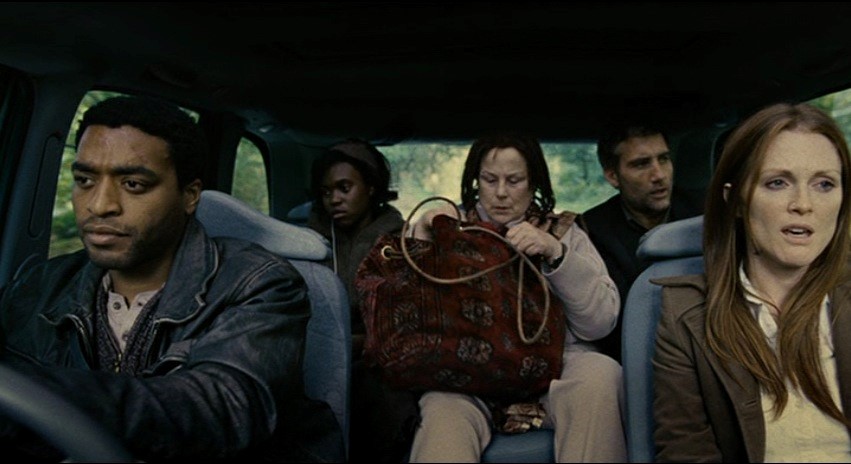
Another movie, another miserable dystopian sci-fi. Yet, in the case of Alfonso Cuaron’s mid noughties effort, we were dealing with a fiercely original and unpredictable take on a ruthless near-possible future. This is no more clearly apparent as with the flabbergasting death of Julianne Moore’s freedom fighter/ex-flame of Clive Owen’s protagonist.
After Owen’s everyman is pulled into a possible government-shattering plotline by Moore, we’re subjected to a flawless one-take shot, set inside a car where our formally standoffish gang of characters start to warm, and Owen and Moore start to show sparks of that old magic – that is until they’re suddenly ambushed by a gang of motorcycle riding assassins and one of them manages to get off a lethal shot through Moore’s neck as the group makes a desperate escape. Did I forget to mention that all of this still takes place within one take and from the interior of the car?
Moore already was the main pull of the plot, hence the utter slapdash surprise of the scene, but to be unpredictably and tragically offed within a sequence shot was a completely unorthodox move in a uniformly unconventional and moving genre drama.
7. Chinatown (1974) – Faye Dunaway
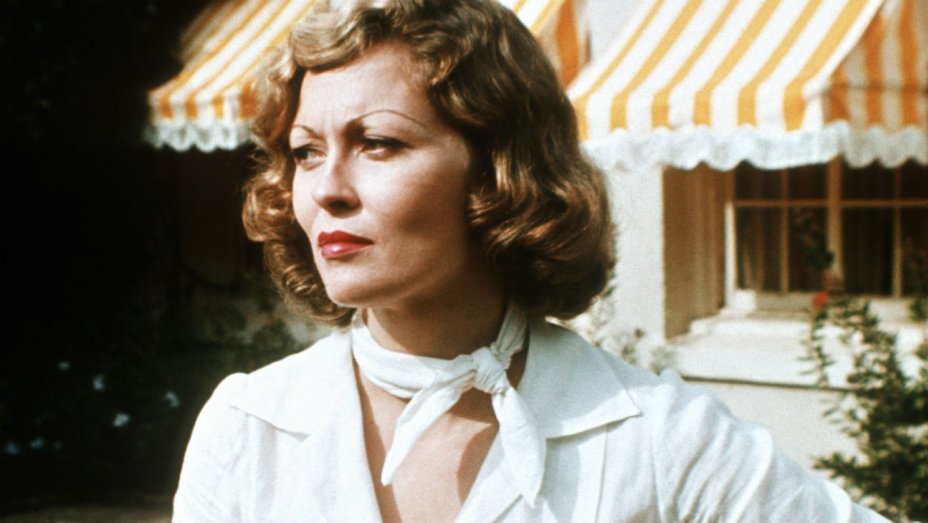
Film noirs are blatantly known for their dark subject matter and downbeat endings, but this 70’s take on the genre has one the bleakest finales the territory has ever offered.
After Jack Nicholson’s detective uncovers the stomach-churning revelation that his love interest (Faye Dunaway) has an illegitimate daughter fathered and held captive by her slimy tycoon dad (John Huston), he helps her on her quest to get sibling/child back and lets them make a run for it.
All well and good, but Dunaway makes her exit by stupidly putting a bullet in Huston’s arm and then hitting the gas; plainclothes cops fire a warning shot and then a couple of strays just for show, expect the car stops dead in its tracks. Dunaway has a ghastly bullet wound embedded in her brain and Huston takes the traumatized daughter/new-plaything off with him, while a devastated Nicholson looks on.
As mentioned, the genre is infamous for it’s bitter wrap-ups, but that’s usually coupled with a moralistic emphasis that crime doesn’t pay – with “Chinatown”, the romantic lead gets horribly murdered, the bad guy wins, and the hero is left a shattered shell of his former self. Director Roman Polanski was understandably going through a grim period and he shared it with us with this famous shocker of a death.
6. No Country for Old Men (2007) – Josh Brolin
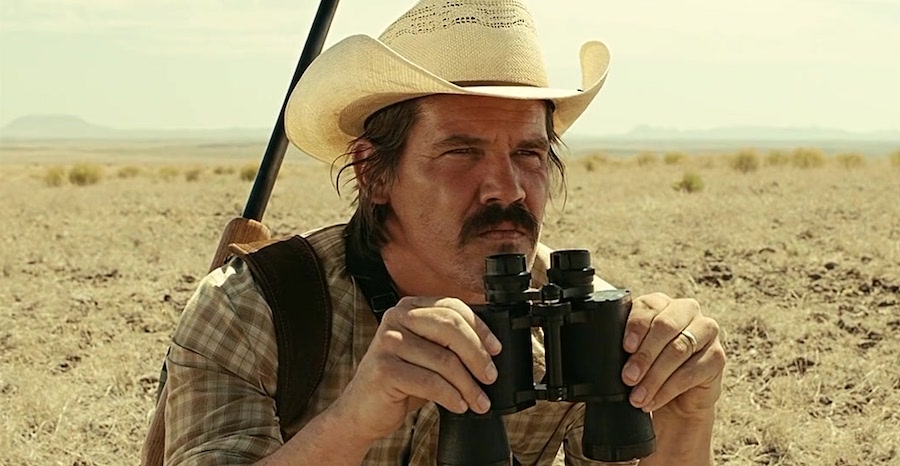
Those pesky Coen brothers strike again with another completely unorthodox movie death – but for much different reasons.”No Country for Old Men” was a chilling return to form after a handful of rare missteps, and it also marked the return to the noirish/western setting of their impressive debut “Blood Simple” (1984).
When Josh Brolin’s farm boy gets involved with a stolen suitcase of money, a violent chess game of minds and wits sets off between him and Javier Bardem’s frightening hitman, with a series of impressive stand-offs exploding between the two. The audience assumes that the die is cast for a hell of a finale between the two – yet, suddenly near the end of act two, Brolin is found dead in a motel room, a victim of a cartel hit not even subjugated by Bardem.
It was a ridiculous carpet that was tugged out from beneath the viewers – not only did our main hero die suddenly and before the film’s end, but it wasn’t even by the villain, and it wasn’t even on-screen!
It was a frustrating yet brave move by the sibling directors as the film blended away from genre thrills and into a harrowing on the nature of death. How very Cormac McCarthy of them.
5. L.A. Confidential (1997) – Kevin Spacey
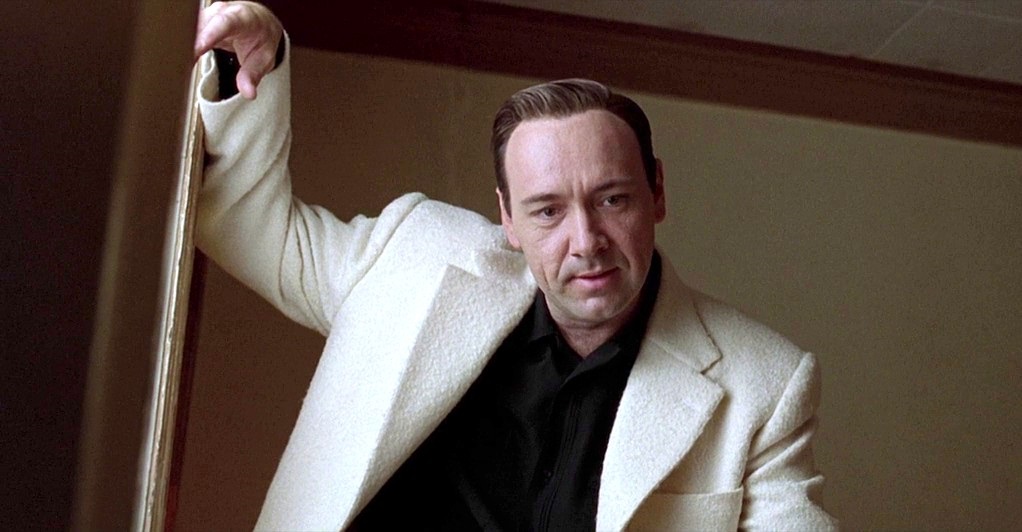
The death of Kevin Spacey’s lovable yet corrupt detective Jack Vincennes is such a shocking game-changing moment in Curtis Hanson’s gripping ode to classic noir, that it’s easy to miss the multiple levels in which it excels so significantly.
Vincennes has come across a minor piece of information that could tie into a big case; he heads over to the house of ‘tough love’ Chief Dudley Smith (James Cromwell) to share said info, expecting the man to hand him a cup of coffee -instead, Spacey is on the receiving end of a bullet. In his dying moments, he throws the name ‘Rollo Tomasi’ to the corrupt Chief – a surefire red herring that will help signify the man’s guilt to Guy Pearce’s fellow cop.
Firstly, Spacey was currently the biggest star of said film (do you see a common pattern on this list?) so killing him off in such a sudden manner was shocking yet so was the swift revealing of the shadowy villain in the fatherly Chief in such a casual manner.
Despite those noticeable elements, another reason the scene has such amazing power is that Vincennes, a sellout of a cop, was on a tough climb towards redemption – by throwing the red herring to the Chief, he achieved a noble and heroic death, helping bring down the huge villain of the piece.
And last but certainly not least, it’s probably the most stunning examples of Spacey’s skills as an actor, as we watch the life and energy literally drain out of his face in his final moments. It’s a true ode to the actor that all of these elements gel in one of the most powerful examples on this list.
4. Infernal Affairs (2002)/The Departed (2006) – Tony Leung/Leonardo DiCaprio
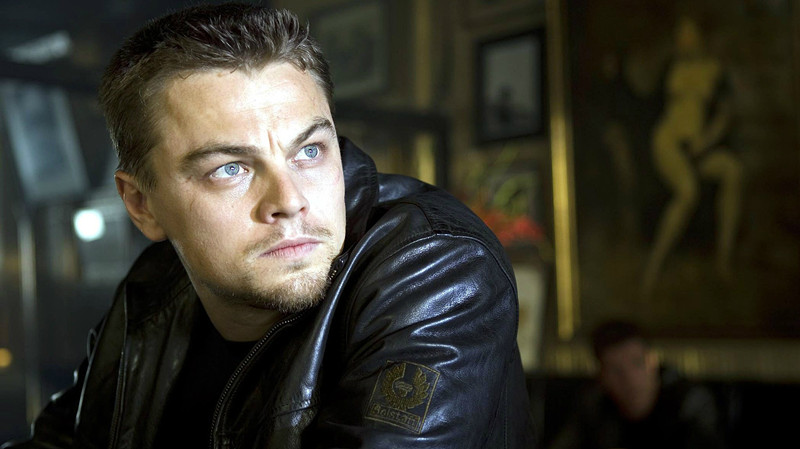
The Asian original and its close-to-superior American counterpoint have such a sharply effective yet simple premise (undercover cop vs. undercover criminal) that most critics were left wondering why it hadn’t been done sooner.
That the said premise leads to a tense and convoluted ‘cat-and-mouse’ game of secrets and misinformation isn’t surprising, but that still doesn’t make the third act capper – when hero cop (Leung/DiCaprio) finally catches turncoat baddie (Lau/Damon) at gunpoint with the incentive to finally put the truth on the table and clear his name – any less applause-worthy.
Then, only moments later, the two characters emerge from the elevator and our hero is shot through the forehead by a second turncoat, and our cause for celebration is swiftly canceled.
Hats off to co-directors Alan Mak and Wai-Keung Lau for the ballsy move to completely floor an audience by so ruthlessly killing off a character that viewers invested and rooted for, in such a no-nonsense manner.
Yet, Martin Scorsese’s remake’s approach to said scene (hence its dual inclusion on the list) – frank, brutal, and leading to a insane domino effect of headshot deaths – is ultimately superior to the drawn-out melodrama of the original. Still, the Asian film beats its American counterpart with its bleaker conclusion, yet that’s a whole other list.
3. To Live and Die in L.A. (1985) – William Petersen
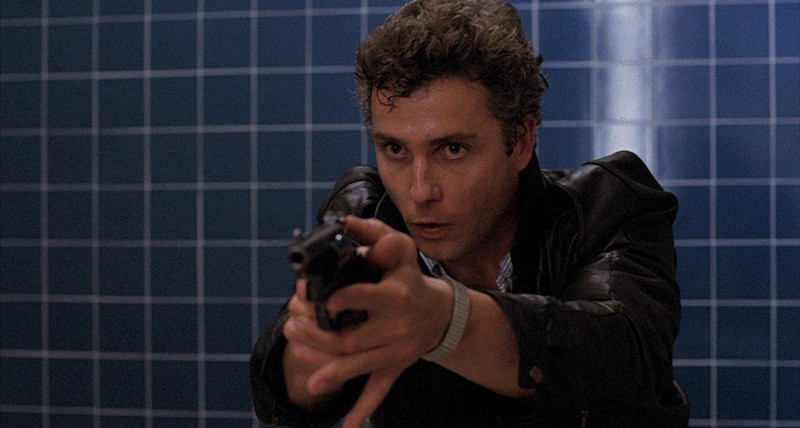
Despite the aggressive parade of the decade’s neon stylings that are so relentlessly apparent in this thriller, William Friedkin’s acidic dissection of the 80’s ‘rogue cop’ movie is one of his most dark and unpredictable works (and that’s really saying something).
Nowhere else is this more apparent than in its devastating ending, as our womanizing/rules-be-damned hero (William Petersen) has finally gotten the film’s villain (Willem Dafoe) – a money launderer who killed his partner – dead to rights. We’ve all seen this scenario and know how it ends, right? Not in this case, as an altercation breaks out where Petersen ends up getting shotgunned point blank in the face, with only his inadequate partner (John Pankow) left to pick up the slack.
It was an amazingly refreshing and grounded take on the ‘take-no-prisoners’ protagonists that were celebrated in every action movie at the time. Friedkin’s simple musings rang clear and true in this severely overlooked classic – those who live by sudden and violent means, usually end up dying in the exact same manner.
2. The Godfather Part 2 (1974)

John Cazale Chalk this one down as one of the most depressing instances of a movie death as well.
When the Mafia dynasty Corleone family have their family trust broken by meek and mousy brother Fredo (John Cazale), the head of the family, Michael (Al Pacino), is understandably fiery to take matters into his own hands. Yet misplaced promises, forgiveness, and shelter are given instead – blood is seemingly thicker than water.
That is, until the film’s final moments where Pacino, the ultimate mastermind, pulls his usual checkmate move and executes all of his enemies in one ugly and bloody swoop, and, surprisingly to audiences and Corleone friends and family alike, Fredo was included on said list.
It was a gloomy twist for the film series to take – sure, they were murdering criminals, but their love and loyalty to family made the Corleones a sympathetic bunch. Throughout the second movie, Michael’s leadership is constantly challenged and compared to his father’s (the point only accented by young Vito’s story told in parallel), and we’re depressingly witness to a man who achieves ultimate power only to be left with a cold and lifeless existence. Fredo’s death sentence is ultimately Michael’s as well.
1. Psycho (1960) – Janet Leigh
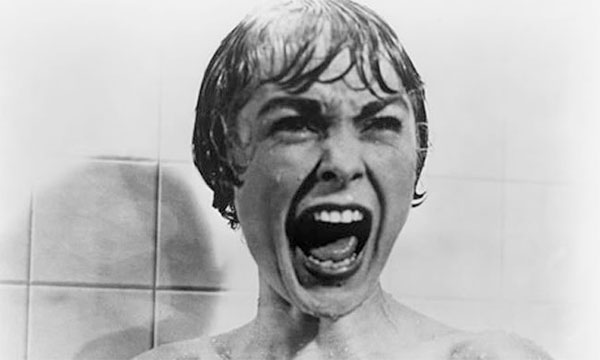
Frankly said, this is the one that started it all – Janet Leigh’s stolen money plot thread took front and center before knife-happy Norman Bates (Anthony Perkins) busts in on her shower, wearing his mum’s wig, and made bloody cinematic history.
Of course, that infamous scene is now a well-known and over-parodied pop culture reference so there’s not much surprise left in it, but for the time, it was a groundbreaking play.
Director Alfred Hitchcock knew exactly what was he doing – Leigh was a prominent actress at the time and viewers had become so invested in the thriller aspects of her drama that to suddenly hijack the story with a horror movie mystery and kill your starlet dead halfway through the runtime, was unfounded. Hitchcock was so invested in this cinematic sucker punch that audience members weren’t allowed into a film showing after starting time.
It was a brave risky move that rejuvenated his decelerating career, but also revolutionized cinematic structure and inspired filmmakers (as witnessed by this list) for decades to come.